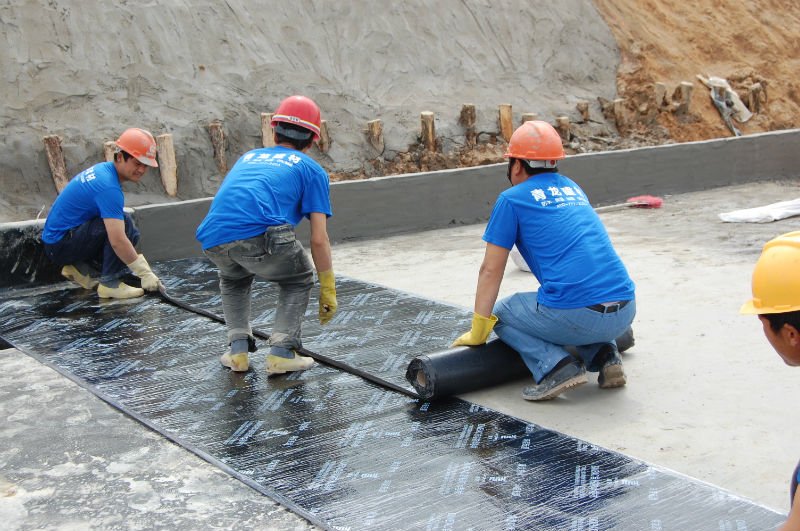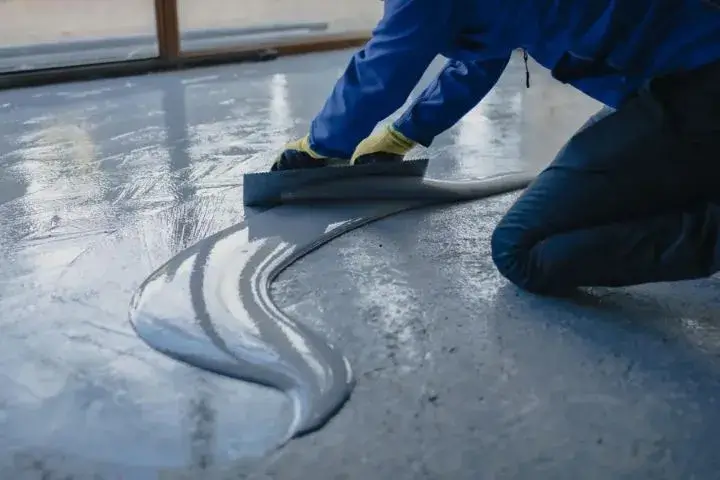Exactly How Waterproofing Functions: A Thorough Check Out Strategies and Technologies
Waterproofing is vital for shielding structures from moisture-related damages. It involves various techniques and modern technologies that develop obstacles versus water invasion. Standard approaches, such as compacted clay, exist together with modern technologies like liquid-applied membranes. Understanding the subtleties of these approaches is essential for efficient application. However, the performance of any waterproofing service hinges not just on the methods utilized yet also on ongoing upkeep and assessment. What are the vital aspects that affect long-lasting performance?
Comprehending the Basics of Waterproofing
Waterproofing is an important procedure that safeguards structures from water intrusion, which can cause substantial damages over time. This approach includes the application of numerous products and methods developed to produce a barrier against moisture. The primary objective is to stop water from permeating surface areas, which can trigger damage, mold growth, and architectural instability.Various factors influence the selection of waterproofing approach, consisting of the sort of framework, its area, and ecological conditions. Comprehending the physics of water motion and the residential properties of different products is critical in choosing a reliable waterproofing solution.Effective waterproofing not just safeguards buildings however likewise boosts their long life and stability. Generally, it is integrated right into the layout phase of building to ensure extensive defense. As understanding of water-related problems grows, the importance of recognizing waterproofing principles comes to be increasingly clear to engineers, contractors, and homeowner alike.
Traditional Waterproofing Techniques
Conventional waterproofing approaches have been used for centuries, relying upon tried and true techniques and materials to safeguard structures from water damage. One of the oldest techniques involves making use of clay, which, when compacted, creates a natural barrier versus dampness. Furthermore, asphalt, a sticky, black material acquired from petroleum, has been utilized for its water-resistant properties, typically put on roofs and foundations.Another method includes the application of lime-based plasters, which supply a breathable layer that enables dampness to get away while preventing water ingress. Thatch roof covering, a traditional method still seen in some cultures, supplies outstanding waterproofing because of its tightly loaded straw layers.Moreover, making use of stone and brick has actually projected, as these products are naturally immune to water when correctly mounted. In general, conventional waterproofing approaches emphasize the relevance of selecting suitable products and building and construction practices to boost sturdiness against water intrusion.
Modern Waterproofing Technologies
Innovations in contemporary waterproofing technologies have actually revolutionized the way structures are protected from water damages. Ingenious strategies such as liquid-applied membrane layers and innovative sealants have actually enhanced the performance and convenience of waterproofing solutions. These innovations permit smooth application, lowering the risk of leaks and making certain complete coverage over complex surfaces.Moreover, the combination of smart innovations, such as moisture sensors and automated surveillance systems, allows real-time analysis of waterproofing performance. This proactive strategy promotes prompt maintenance and decreases long-lasting repair work costs.Additionally, developments in spray-applied finishings offer quick application and excellent adhesion, adapting to different substrates while supplying robust defense. Strategies like polymer-modified systems better enhance flexibility and toughness, making them appropriate for diverse environments. Generally, modern-day waterproofing innovations not just mitigate water intrusion but likewise add to the longevity and sustainability of structures, noting a significant change in the industry.
Products Used in Waterproofing
The performance of waterproofing solutions greatly depends on the materials used in their application. Various products are used to develop barriers versus water access, each with distinct properties fit for different environments. Typically made use of materials consist of membranes, finishes, and sealants.Liquid-applied membranes, typically made from polyurethane or acrylic, form a seamless barrier that adapts to complex surface areas. Sheet membrane layers, generally constructed from rubber or polycarbonate, deal resilience and are optimal for bigger locations. Furthermore, cementitious waterproofing materials, made up of cementitious compounds, offer superb adhesion and flexibility.Sealants made from silicone or polyurethane are important for joints and seams, guaranteeing extensive defense. Furthermore, advanced materials, such as geo-composite membranes, combine multiple functions, boosting efficiency. In general, the option of waterproofing products is important in achieving long-lasting and reliable water resistance, tailored to specific project requirements and environmental problems.
Common Applications of Waterproofing
Waterproofing plays a crucial function in numerous sectors, making certain the longevity and integrity of structures. Common applications consist of residential services that safeguard homes, business infrastructure that safeguards companies, and industrial settings that call for durable security versus moisture. Comprehending these applications highlights the significance of waterproofing in maintaining both safety and capability throughout various atmospheres.
Residential Waterproofing Solutions
Lots of home owners encounter challenges with moisture invasion, making efficient property waterproofing remedies crucial. Various approaches exist to resolve this issue, including exterior and interior waterproofing systems. Interior options typically entail the application of sealers and layers to cellar wall surfaces, which aid prevent water infiltration. Outside techniques typically consist of the installment of drainage systems and water resistant membrane layers that divert water far from the foundation.Additionally, home owners may consider sump pumps to get rid of water build-up and dehumidifiers to manage humidity degrees. Appropriate grading and the use of gutters additionally play a crucial duty in taking care of water circulation around the home. By executing these strategies, homeowners can substantially minimize the risk of water damage and mold and mildew growth, making certain a dry and safe living setting.

Business Framework Security
Reliable waterproofing options play an important role in the defense of business facilities. Sump pump discharge drainage Omaha. These strategies are important for protecting structures, car park frameworks, and bridges from water damages, which can compromise structural integrity and lead to costly repairs. Typical applications include the installation of membrane layers, finishes, and sealers that create barriers versus moisture seepage. Areas such as cellars, roofs, and exterior wall surfaces are commonly focused on to guarantee durability and durability. Additionally, waterproofing systems can improve energy efficiency by protecting against water-related problems that might lead to mold growth and damage. By Discover More implementing durable waterproofing steps, homeowner can secure their investments and maintain operational efficiency, ultimately adding to the total sustainability of commercial centers
Industrial Applications Review
While numerous sectors face special challenges, the need for reputable waterproofing services continues to be a constant in commercial applications. Industries such as production, construction, and energy often come across settings where moisture exposure can jeopardize structural integrity and functional efficiency. In making centers, waterproofing is critical for safeguarding machinery see and products from water damage. In building and construction, it safeguards foundations and basements versus groundwater infiltration. The power field counts on waterproofing for the protection of tools in hydroelectric plants and offshore frameworks. Additionally, food processing industries make use of waterproofing to ensure hygiene and compliance with security criteria. Generally, efficient waterproofing solutions are essential for enhancing durability, safety and security, and efficiency throughout numerous industrial setups.
Maintenance and Longevity of Waterproofing Solutions
Waterproofing options are made to offer lasting security versus moisture breach, routine maintenance is vital to assure their efficiency and longevity. Regular evaluations play a substantial function in recognizing prospective problems such as cracks, peeling, or indications of water damage. Addressing these issues promptly can stop further degeneration and pricey repairs.Additionally, cleansing the surface of waterproof locations helps eliminate dust and particles that could compromise the honesty of the waterproofing barrier. It's also advisable to reapply safety layers or sealers as suggested by manufacturers to maintain optimal performance. Ecological factors, such as UV exposure and extreme weather, can influence the life-span of waterproofing materials, making routine evaluation crucial
Frequently Asked Questions
Can Waterproofing Be Applied in Cold Climate?
The inquiry of using waterproofing in winter increases concerns about bond and healing. Many products might not do at their finest in low temperature levels, demanding careful choice and factor to consider of certain guidelines for under tile waterproofing effective application.
The Length Of Time Does Waterproofing Normally Last?
The duration of waterproofing performance differs based upon materials and ecological factors. Normally, it can last from 5 to 10 years, yet regular upkeep and examinations are necessary to ensure peak efficiency and longevity.
Is DIY Waterproofing Effective and Safe?
The effectiveness and security of do it yourself waterproofing depend upon numerous elements, consisting of worldly top quality and application method. While some individuals achieve sufficient outcomes, others might run into issues that endanger lasting defense and structural integrity.
What Are the Signs of Failing Waterproofing?
Signs of failing waterproofing consist of noticeable water spots, peeling off paint, mold and mildew growth, musty odors, and wetness in wall surfaces or ceilings - Basement waterproofing Omaha. These indicators recommend endangered obstacles, necessitating timely examination and possible remediation to avoid additional damages
Exactly how Do I Select the Right Waterproofing Professional?
